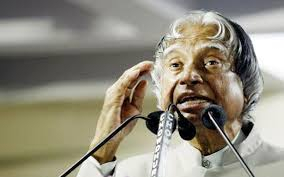Who first used clocks?

It is believed that the Babylonians fist used a pole fixed in the ground to measure the passing of time. They noticed that the position of the shadow changed during the hours of sunlight. They found that the shadow was long at sunrise and that it slowly grew shorter until it reached a point when it started to lengthen again. They learnt to judge the time by looking at the shadow.
The simple shadow and pole arrangements were the basis of the various shadow clocks or sundials used by the ancient Egyptians. Eventually sundials were provided with the hour figures engraved on a metal plate.
The Egyptians also used a clepsydra or water clock. This was a basin-shaped, alabaster vessel filled with water that ran out through a hole in the bottom. The time was indicated by the level of water remaining inside.
Monks were the first to operate clocks by wheels and weights. Clocks of this type, found in monasteries, date back to the 14th Century. The first spring clock is dated about 1500.
Picture credit: google



 Jean Baptiste Lamarck was a French scientist who developed a theory of evolution at the beginning of the 19th century. His theory involved two ideas. The first was the law of use and disuse, which stated that a characteristic which is used more and more by an organism becomes bigger and stronger, and one that is not used, eventually disappears. The second law was the law of inheritance of acquired characteristics. It stated that any feature of an organism that is improved through use, is passed to its offspring. However, Lamarck’s theory cannot account for all the observations made about life on Earth. For instance, his theory would predict that all organisms gradually become complex and simple organisms disappear. But we know that this is not the case, and that simple organisms still exist. So today, Lamarck’s theory is largely ignored.
Jean Baptiste Lamarck was a French scientist who developed a theory of evolution at the beginning of the 19th century. His theory involved two ideas. The first was the law of use and disuse, which stated that a characteristic which is used more and more by an organism becomes bigger and stronger, and one that is not used, eventually disappears. The second law was the law of inheritance of acquired characteristics. It stated that any feature of an organism that is improved through use, is passed to its offspring. However, Lamarck’s theory cannot account for all the observations made about life on Earth. For instance, his theory would predict that all organisms gradually become complex and simple organisms disappear. But we know that this is not the case, and that simple organisms still exist. So today, Lamarck’s theory is largely ignored. The Cambrian Period lasted for nearly 53 million years, from about 543 million years ago, until 490 million years ago. The continents were still forming, but were mostly barren rocks. The land had no plant or animal life on it yet. During the Cambrian Period, there was an explosion of life forms. Most of these were in the water. Many animals with no backbones lived in the shallow seas. The most plentiful species during this period were trilobites. The species got its name from the three lobes in the hard skin. The trilobite was also one of the first animals to have eyesight. There were plenty of other species living during the Cambrian Period also. Molluscs, worms, sponges and echinoderms filled the Cambrian seas. The plants of the Cambrian were mostly simple, one-celled algae.The Cambrian period ended in a mass extinction. Advancing glaciers would have lowered the temperature of the shallow seas where so many species lived. Changes in the temperature and the amount of oxygen in the water would have meant the end for any species that could not adapt.
The Cambrian Period lasted for nearly 53 million years, from about 543 million years ago, until 490 million years ago. The continents were still forming, but were mostly barren rocks. The land had no plant or animal life on it yet. During the Cambrian Period, there was an explosion of life forms. Most of these were in the water. Many animals with no backbones lived in the shallow seas. The most plentiful species during this period were trilobites. The species got its name from the three lobes in the hard skin. The trilobite was also one of the first animals to have eyesight. There were plenty of other species living during the Cambrian Period also. Molluscs, worms, sponges and echinoderms filled the Cambrian seas. The plants of the Cambrian were mostly simple, one-celled algae.The Cambrian period ended in a mass extinction. Advancing glaciers would have lowered the temperature of the shallow seas where so many species lived. Changes in the temperature and the amount of oxygen in the water would have meant the end for any species that could not adapt.
 The Precambrian Period spans a long period of the Earth's history. It starts with the planet's creation about 4.5 billion years ago, and ends with the emergence of complex, multicelled life-forms almost four billion years later. It is extremely significant, because it is the earliest of the geologic ages which are marked by different layers of sedimentary rock. Laid down over millions of years, these rock layers contain a permanent record of the Earth's past, including the fossilized remains of plants and animals buried when the sediments were formed.The Precambrian is divided into two parts- the Archaean time, and the Proterozoic Era. There may not have been many different forms of life, but very important changes were taking place during the Precambrian. The Earth was formed, and its outer covering cooled and hardened into a crust. The hot molten insides of the Earth leaked out at weak places in the crust to form volcanoes. The clouds formed by the volcanoes caused huge amounts of rain to fall, and the oceans were created.The first life formed. The oceans were like a thick soup, and their chemistry made them the perfect place for life to begin. The first one-celled organisms formed during the Precambrian Era. They had an important job to do. They helped make the air and water around the Earth full of oxygen. Once there was plenty of oxygen, new life could form. This life would have many cells which would evolve into different kinds of animals. All of the important work of the Precambrian period made the Earth ready for what would come next.
The Precambrian Period spans a long period of the Earth's history. It starts with the planet's creation about 4.5 billion years ago, and ends with the emergence of complex, multicelled life-forms almost four billion years later. It is extremely significant, because it is the earliest of the geologic ages which are marked by different layers of sedimentary rock. Laid down over millions of years, these rock layers contain a permanent record of the Earth's past, including the fossilized remains of plants and animals buried when the sediments were formed.The Precambrian is divided into two parts- the Archaean time, and the Proterozoic Era. There may not have been many different forms of life, but very important changes were taking place during the Precambrian. The Earth was formed, and its outer covering cooled and hardened into a crust. The hot molten insides of the Earth leaked out at weak places in the crust to form volcanoes. The clouds formed by the volcanoes caused huge amounts of rain to fall, and the oceans were created.The first life formed. The oceans were like a thick soup, and their chemistry made them the perfect place for life to begin. The first one-celled organisms formed during the Precambrian Era. They had an important job to do. They helped make the air and water around the Earth full of oxygen. Once there was plenty of oxygen, new life could form. This life would have many cells which would evolve into different kinds of animals. All of the important work of the Precambrian period made the Earth ready for what would come next. Hallucigenia was a bizarre looking fossil which appeared to have tentacles on its back. For a long time, scientists were baffled by it, and unable to determine what kind of creature it was. Finally, they realized that they were looking at it upside down! The tentacles were in fact, legs that resembled the tubular legs of today’s velvet worms!
Hallucigenia was a bizarre looking fossil which appeared to have tentacles on its back. For a long time, scientists were baffled by it, and unable to determine what kind of creature it was. Finally, they realized that they were looking at it upside down! The tentacles were in fact, legs that resembled the tubular legs of today’s velvet worms!
 Morse code was a system of communication in which letters and numbers were represented by dots and dashes that could be transmitted by telegraph in the form of sound, and also as flashes of light. The code was invented by Samuel Morse. The Morse code was used extensively by ships at sea. It was used in emergencies throughout the world. However, as technology advanced, the Morse code became obsolete.
Morse code was a system of communication in which letters and numbers were represented by dots and dashes that could be transmitted by telegraph in the form of sound, and also as flashes of light. The code was invented by Samuel Morse. The Morse code was used extensively by ships at sea. It was used in emergencies throughout the world. However, as technology advanced, the Morse code became obsolete. The Vendian Period began about 650 billion years ago, and ended about 543 million years ago with the beginning of the Cambrian Period. The Vendian is when the earliest known animals evolved. These included soft-bodied multi cellular animals, like sponges and worms. During the Vendian, the continents had merged into a single supercontinent called Rodinia. In the 20th century, macroscopic fossils of soft-bodied animals, algae, and fossil bacteria have been found in rocks attributed to the Vendian Period in a few localities around the world. The Vendian is also known as the Ediacaran or as the Proterozoic.
The Vendian Period began about 650 billion years ago, and ended about 543 million years ago with the beginning of the Cambrian Period. The Vendian is when the earliest known animals evolved. These included soft-bodied multi cellular animals, like sponges and worms. During the Vendian, the continents had merged into a single supercontinent called Rodinia. In the 20th century, macroscopic fossils of soft-bodied animals, algae, and fossil bacteria have been found in rocks attributed to the Vendian Period in a few localities around the world. The Vendian is also known as the Ediacaran or as the Proterozoic. Did you know that chalk is almost entirely made up of tiny shells? These shells once belonged to microscopic animals that floated on the ocean’s surface. They can form layers that over the ages become towering chalk cliffs!
Did you know that chalk is almost entirely made up of tiny shells? These shells once belonged to microscopic animals that floated on the ocean’s surface. They can form layers that over the ages become towering chalk cliffs! Vietnam is a small country in Southeast Asia. In 1954, it was divided into communist-ruled North Vietnam, and non communist South Vietnam. North Vietnam wanted to end US support of South Vietnam, and to unite the north and south into a single nation. Over the next ten years, tensions in the area increased as the conflict between North and South Vietnam grew. When North Vietnam attacked a US destroyer on August 2nd 1964, USA officially entered the Vietnam War.
Vietnam is a small country in Southeast Asia. In 1954, it was divided into communist-ruled North Vietnam, and non communist South Vietnam. North Vietnam wanted to end US support of South Vietnam, and to unite the north and south into a single nation. Over the next ten years, tensions in the area increased as the conflict between North and South Vietnam grew. When North Vietnam attacked a US destroyer on August 2nd 1964, USA officially entered the Vietnam War.

 You must all have heard about the Great Flood that swept across the earth in ancient times. Many people believe that thousands of animals that were swept away by the flood eventually became fossils. It is true that conditions during the flood were ideal for 'fossilizing' millions of animals, plants, and even dinosaurs. In fact, thousands of dinosaur bones can be found where they were washed together by violent flood waters and buried under mud, sand and rock. Many of the animals were torn apart, and their bones broken and jumbled-up. The mud and sands hardened like concrete to form the great layers of fossil rocks we find today.Quick flood burial would be the only way that so many dinosaurs and other things could have become fossilized in the way scientists have found them. Animals and plants will fossilize only if they are buried quickly and deeply – before predators, decay, and weather destroy them. Most scientists do not support this theory, but there are some scientists today who are seeking evidence to support it.
You must all have heard about the Great Flood that swept across the earth in ancient times. Many people believe that thousands of animals that were swept away by the flood eventually became fossils. It is true that conditions during the flood were ideal for 'fossilizing' millions of animals, plants, and even dinosaurs. In fact, thousands of dinosaur bones can be found where they were washed together by violent flood waters and buried under mud, sand and rock. Many of the animals were torn apart, and their bones broken and jumbled-up. The mud and sands hardened like concrete to form the great layers of fossil rocks we find today.Quick flood burial would be the only way that so many dinosaurs and other things could have become fossilized in the way scientists have found them. Animals and plants will fossilize only if they are buried quickly and deeply – before predators, decay, and weather destroy them. Most scientists do not support this theory, but there are some scientists today who are seeking evidence to support it. Johann Jakob Scheuchzer was a Swiss naturalist and fossil hunter. He believed that the Great Flood created all sedimentary rocks and fossils. In 1725, he examined what he believed were the fossilized human remains of a victim of the Deluge. However, it was actually the fossil of a giant salamander. Scheuchzer was responsible for laying the groundwork for the science of fossils.
Johann Jakob Scheuchzer was a Swiss naturalist and fossil hunter. He believed that the Great Flood created all sedimentary rocks and fossils. In 1725, he examined what he believed were the fossilized human remains of a victim of the Deluge. However, it was actually the fossil of a giant salamander. Scheuchzer was responsible for laying the groundwork for the science of fossils.  The Proterozoic Era was between 2.5 billion and 542 million years ago. One of the most important events of this era was the gathering of oxygen in the Earth's atmosphere. Near the end of the Proterozoic Era, about 600 million years ago, creatures with more than one cell, like hydras, jellyfish, and sponges lived in the oceans. About 550 million years ago, these creatures evolved into flatworms, then round worms, and finally, into segmented worms. Thus, it was during this period that the first multi-cellular organisms came into existence. It was during the Proterozoic Era that fiery formation processes of the Hadean and the undersea continent-building of the Archaean were replaced by the process of plate tectonics. As a result, a single super-continent formed. Today, it is called Rodinia.
The Proterozoic Era was between 2.5 billion and 542 million years ago. One of the most important events of this era was the gathering of oxygen in the Earth's atmosphere. Near the end of the Proterozoic Era, about 600 million years ago, creatures with more than one cell, like hydras, jellyfish, and sponges lived in the oceans. About 550 million years ago, these creatures evolved into flatworms, then round worms, and finally, into segmented worms. Thus, it was during this period that the first multi-cellular organisms came into existence. It was during the Proterozoic Era that fiery formation processes of the Hadean and the undersea continent-building of the Archaean were replaced by the process of plate tectonics. As a result, a single super-continent formed. Today, it is called Rodinia. 
